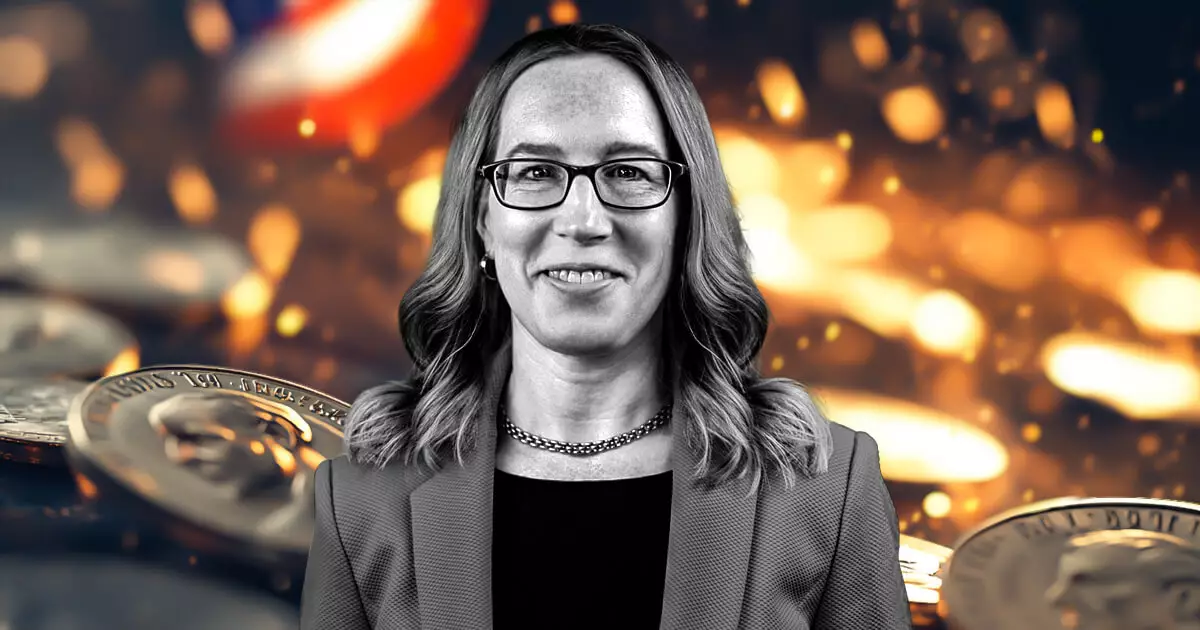In a recent conversation with Bloomberg, SEC Commissioner Hester Peirce articulated a significant issue faced by regulators regarding the classification of memecoins within existing financial frameworks. She pointed out that many of these digital assets likely do not qualify as securities according to current laws, highlighting a void in regulatory jurisdiction. Peirce stated, “There are lots of people introducing memecoins right now [and] facts and circumstances matter.” This observation underlines a major challenge within the regulatory framework that fails to encompass the evolving landscape of cryptocurrency assets.
The lack of a clear classification creates an unnerving ambiguity for investors and creators alike. Without distinct regulatory guidance, many memecoins, characterized by their whimsical nature often connected to memes or internet culture, have gained traction without oversight. This phenomenon poses questions about investor protection and the safeguarding of market integrity. As Peirce noted, pursuing legislative changes from Congress could provide necessary clarity about how these types of tokens could or should be regulated.
White House crypto advisor David Sacks added another layer to this discussion by suggesting that memecoins should be regarded more as collectibles rather than financial instruments. He aptly compared them to traditional collectibles, stating, “It’s like a baseball card or a stamp. People buy it because they want to commemorate something.” This perspective encourages a reassessment of how these assets are perceived and classified in an evolving digital economy.
Support for this idea was echoed by ETF Store President Nate Geraci, who similarly aligned memecoins with collectibles rather than securities. Their arguments signify a potential shift in how we could frame the value of digital assets—one that is rooted in cultural relevance and community engagement rather than purely speculative investment. Such framing can fundamentally alter investor interactions and expectations concerning these digital tokens.
Despite their speculative nature, memecoins have surged in popularity, frequently fueled by social media trends and cultural references. This growth is evident in the involvement of prominent public figures, such as former President Donald Trump and his wife Melania, who have launched their memecoins. Furthermore, the Central African Republic’s issuance of its own token adds another dimension to the evolving landscape of memecoins, reinforcing their cultural and economic significance in the global context.
The marketplace for memecoins is not merely a trend; it reflects the dynamic interplay between digital assets and popular culture. Crypto influencer Ansem posits that memes and viral trends are fundamental drivers of memecoin popularity, emphasizing their role as contemporary cultural artifacts. This engagement is crucial for understanding the market sentiment that propels these assets into the digital financial sphere.
As the landscape around cryptocurrencies continues to evolve, the call for a reexamination of regulatory practices grows louder. The distinction between memecoins and traditional financial securities is becoming increasingly critical, considering the diverse motivations behind investing in these whimsical tokens. Amid ongoing discussions about suitable legislative measures, market participants must stay informed and engaged as these developments unfold, preparing for a future where memecoins might acquire a distinct place in the digital economy. The evolving narrative around memecoins presents a unique intersection of finance, culture, and internet dynamics, fostering an environment of collaborative exploration and growth.
















Leave a Reply